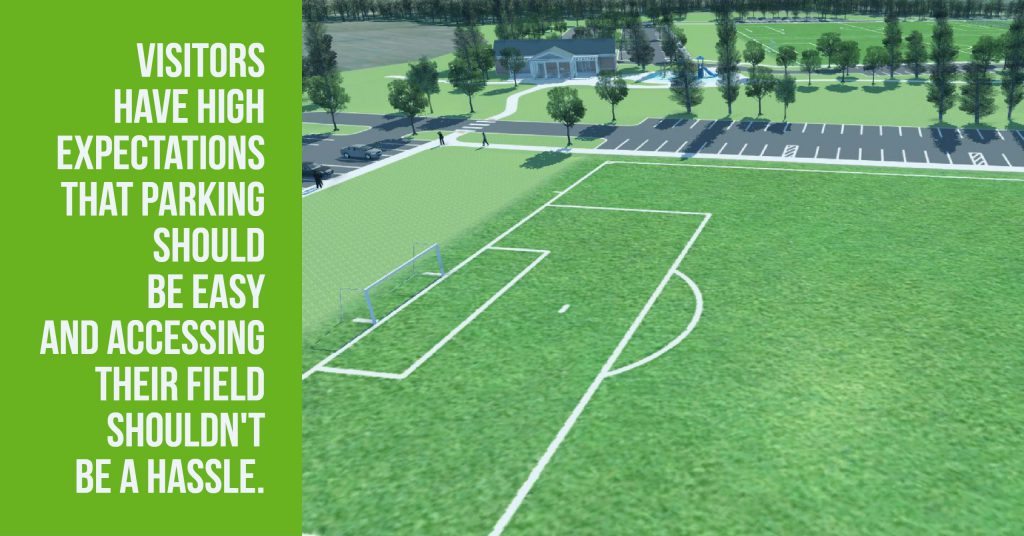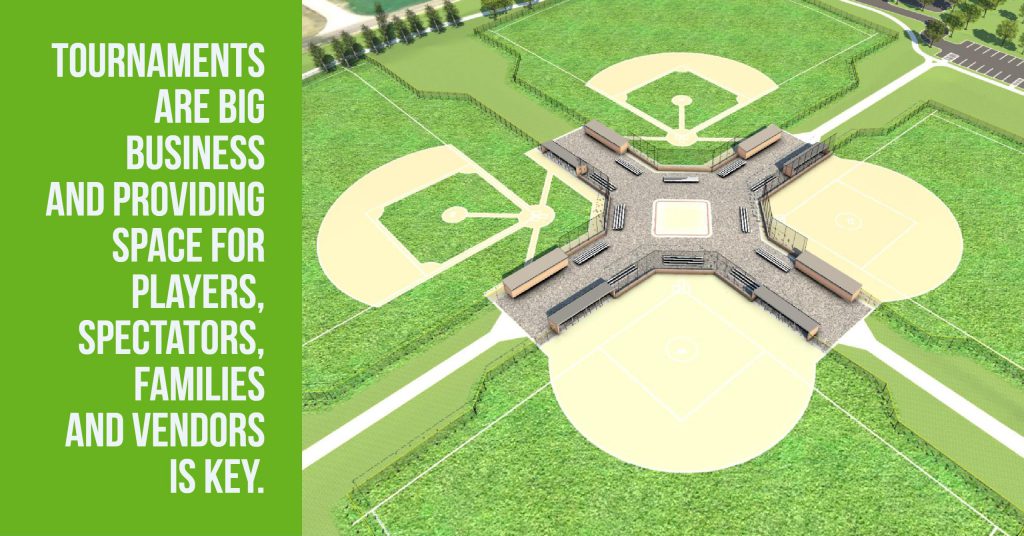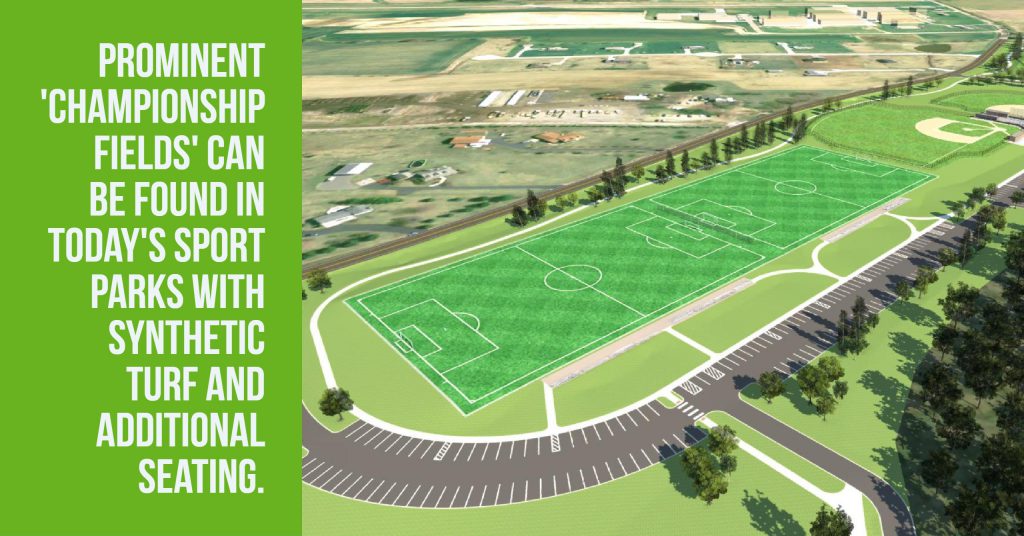Tennis Court Rust Spot Repair Options
Remediation offers various solutions, but the following are the ones most frequently discussed:
- Remove the contaminated aggregate.
- Cover the contaminated aggregate with an acrylic surface coating utilizing a rust inhibitor/stain blocker.
- Cover the contaminated aggregate with a polyurethane surface coating.
- Cover the contaminated aggregate with a tennis court “mat” system.
- Cover the contaminated aggregate with a new surface course of asphalt.
Option 1 – Remove the Aggregate:
Summary – Contractor drills out all the visible iron pyrite. The holes are patched with an acrylic patch binder. Apply rust inhibitor and new court surface paint.
- Pros – The source of the staining is completely removed from the surface.
- Cons – May not get every piece of iron pyrite.
- Cost – Medium, labor-intensive
- Level of Success – High
Option 2 – Cover aggregate with an acrylic surface coating for tennis courts utilizing a rust inhibitor/stain blocker:
Summary – Contractor applies rust inhibitor. Either paint on exposed aggregate, covers the entire court, or both; one or two coats. Some products are installed as a primer, while some are mixed with the color coatings. The initial coat is intended to “encapsulate” the iron pyrite. Products mixed in with the surface are intended to minimize staining. The rust inhibitor products are generally products developed to improve bonding to greasy or oily surfaces. These are what encapsulates the iron.
- Pros – Simple installation. Common in many industries.
- Cons – Iron pyrite that is not exposed is not “encapsulated.” Latex is a permeable breathable surface. The permeability allows moisture into the surface which can contact iron that is not encapsulated which will then rust and stain the new surface. Be aware that rust spots will come back through the surface. The rate of success is as low as 60% to as high as 85%. Rust can be expected to reappear in two to five years.
- Cost – Medium
- Level of Success – Medium
Option 3 – Cover the contaminated aggregate with a polyurethane surface coating:
Summary – A polyurethane waterproofing membrane is installed across the entire court.
- Pros – The polyurethane coating is non-permeable, which stops surface water from reaching the iron pyrite.
- Cons – Trapping moisture under the surface and not allowing it to breathe could cause blistering. Moisture from under the surface being heated on hot summer day, forcing water vapor to rise and hit the iron pyrite, causes rust which may push through the surface.
- Cost – Medium-high
- Level of Success – Medium to high
Option 4 – Cover the contaminated aggregate with a “mat” system:
Summary – A thick (+/- 3/16”) mat court system is installed across the entire court area.
- Pros – The surface is guaranteed for 25 years. The surface will prevent asphalt cracking, the most common failure mechanism for outdoor asphalt courts, from reaching the surface.
- Cons – Below surface water could push through the surface carrying rust particles and stain the surface.
- Cost – Very high
- Level of Success – High
Option 5 – Cover the contaminated aggregate with a new surface course of asphalt:
Summary – Install a new course of asphalt with properly sourced aggregate and re-paint courts.
- Pros – Extends life to the existing courts.
- Cons – Requires milling or raising of net posts will have a lip at the fence edges.
- Cost – Medium-high
- Level of Success – High
Sources of Information:
- Paul Harris, California Products – Internationally known tennis court surface manufacturer.
- Rob Righter, Nova Sports U.S.A. – Internationally known tennis court surface manufacturer.
- Andreas Schulze Ising, American Polymer Technologies (APT) – Internationally known polymer company specializing in sports surfaces.
- Jeff Gearheart, SportMaster Coatings – Nationally known tennis court surface manufacturer (also has pavement sealant side of business).
- Chuck Sperrick, Neyra Industries – National tennis court surface manufacturer (also has pavement sealant side of business).
- Jeff Henderson, Tennis Technology – Regional Tennis Contractor.
- Jim Lathrop, Total Tennis – Regional Tennis Contractor.
- Rich Vettle, ABCO Paving – Regional Tennis Contractor.
- David Baird, Industrial Surface Sealer, Inc. – Regional Pavement Maintenance Contractor.
10 Things to Consider When Planning a Sports Park
It’s not every day that an Owner takes on planning a 100+ acre sports park, but when the scenario arises, The Kleingers Group brings proven experience to the team. Over the years, Kleingers has designed a number of large-scale sports parks and has found that many of the same considerations tend to come up during our design process. We would like to share with you what to consider before you take on your sports park design.
1. Connect to Existing Community Assets
Creating transportation linkages to other community resources such as parks, schools, YMCAs, and more will encourage participation at the new development. Pursue ways to blend the new park with its surroundings and work with neighbors and stakeholders to build support for the project. Leverage connections through existing infrastructure like trailways, complete streets, and other multi-modal systems will provide easy access for bicyclists and pedestrians who visit the facility.
2. Create a Site that is Safe, Easy to Use, and Navigate
Speaking of connecting the site with pedestrians, it’s also important to design ways to keep them safe, especially from vehicular traffic. Maintain separate vehicle travel zones and pedestrian travel zones when possible and provide for safe and clearly marked crosswalks to help minimize conflicts. Branding, wayfinding, and creative use of landscape theming will help visitors with vehicles travel to their destination within the site more efficiently while minimizing user frustration.
Oftentimes, large sports complexes lack adequate wayfinding due to oversight or budget concerns. Proper wayfinding design can help users get to where they need to be while also creating a recognizable brand for the sports park and the associated owner.
3. All Sports Park Owners are in the Parking Business
Did you know that many competitive organizations that bring tournaments to sports parks require minimum parking per event? Organizers hosting tournaments require anywhere between 50-100 spaces per field, some require even more. Believe it or not, sports park owners are in the parking business. Visitors have high expectations that parking should be easy and accessing their field shouldn’t be a hassle. Tournament organizers must meet the demands of their clients, which means balancing the site’s infrastructure is important to everyone’s bottom line. Planning for enough parking close to destination points within the design allows for better traffic flow and provides better ADA access throughout the site. The site layout needs to balance ease of access without being interrupted by large parking areas, or losing the vibrancy of an active and energized park.

4. Plan for Flexibility: Master Planning the Site for Optimum Use
Creating a park with the most flexible layouts will mean more options for end-users. Engineering the field grading is a key component. Fields should be carefully engineered to accommodate high-end games and large events with the ability to host smaller games within the same space without compromising the playable area, including crowns and field orientation.
Master planning a complex for multiple sports provides flexibility when attracting special events. Understanding how to plan for and design sports parks for flexibility amongst sports, whether soccer, football, lacrosse, rugby, Australian football, ultimate frisbee, baseball, softball, or cricket will attract a larger audience. Knowledge of national sports trends will allow the field designer to guide a client through the planning stages while meeting their needs and measured desires within the area.
5. Coordinate with Local Municipalities
Working with local interests and shareholders during the design process helps to ensure that everyone has a voice in the process of designing the sports park. Creating opportunities for partnerships early will help generate buy-in from key stakeholders and community members. Our experience in working through this relationship helps guide programming, affordability, and ultimately desired priorities.
6. Plan for Extra Traffic in the Area
More often than not, any new development brings additional traffic to a site. Traffic engineers can provide traffic studies to better understand current traffic conditions and anticipated changes and recommendations.

7. Sports Engineering is Key: Grading, Drainage & Field Performance Will Keep Them Coming Back
Creating space for tournaments is big business and retaining that business helps any sports park be successful. If the grading, slopes, drainage, playing surfaces, and other amenities are not designed properly, tournament organizations will take their business down the road to the competing sports park. Competitive organizations have a business to run and their business model depends on feedback from players and parents who use the fields, facilities, and park amenities at these events. Positive survey feedback will increase the chances that they return again for another event.
8. Plan for Attendees Who are not Players or Spectators
A large portion of the sports park business is creating a fun and comfortable experience for attendees. Creating spaces, such as playgrounds, within eyesight of a group of playing fields keeps that family with one child playing in the game and another bored on the sideline entertained and comfortable. Providing a trail system allows for visitors to take a break between tournament games, connect to another game across the complex, or meander to a ‘hub’ with concessions and restrooms nearby. Trails also appeal to pedestrians and bicyclists across the community.
9. Create a Space for Vendors
An often-overlooked element of the sports complex business is providing adequate space for vendors who are often on hand during a sporting event selling sports equipment, promotional items, and more to parents and other attendees. Creating ‘vendor zone’ spaces convenient to tournament sites is a key selling point to those looking to bring competition to the area.
10. Plan for Championships and Celebrations
Another trend in design that we see is the inclusion of championship fields. These higher-quality fields, sometimes utilizing synthetic turf, are designed with more seating and are typically located in prominent areas of the complex to draw more crowds as competitions wind down. Additionally, we see the integration of amphitheater spaces where teams celebrate their accomplishments with awards ceremonies.
Summary
These design considerations are a fraction of the items to explore when creating a sports park. At Kleingers/Sportworks, we understand the business of sports parks, the competition that takes place inside and outside the park, and the investment owners take in creating these opportunities for revenue. We also understand good engineering, traffic, sports field engineering, survey and landscape design, and the importance of getting all of these things done right for the bottom line and ultimate success of any sports park complex.
Examining the Components of Synthetic Turf
Building a quality field is about finding the right mix of performance, durability, maintenance, and safety all within your budget.
No one wants to spend too much or alternatively, build a field that requires lots of maintenance and deteriorates quickly.
Having designed nearly 100 synthetic turf fields, Sportworks often serves as a third-party turf consultant for our clients, helping them find the best mix of performance and durability within their budget.
Below are just a few of the synthetic turf considerations Sportworks can help clients work through:
Fibers and Backing
There are a number of different systems to choose from, including monofilament, slit film, and a thatch layer, or any combination of the three. Sportworks helps clients evaluate the pros and cons of each and then select the correct physical characteristics of the fiber depending on the type of infill and if a pad will be used or not.
Read more about synthetic turf at the Sportworks site here.
Sportworks Adds G-MAX Testing
As concussions caused by sports injuries continue to gain attention, it becomes more and more important for synthetic field owners to complete regular maintenance to ensure that their field continues to be safe for their players.
In November, Sportworks Field Design added G-MAX testing to its arsenal of field testing tools, allowing schools and other field owners to test the impact of the synthetic turf on players’ bodies and, more importantly, their heads.
Some studies highlight ways a synthetic field can be safer for players than natural grass. But over time, as a field gets more and more use, the infill can migrate away from high-use areas and begin to thin. The obvious result is that the field can get harder with less shock absorption each time a player falls. Field owners may be tempted to skip maintenance because of cost, but an unmaintained field can be a liability when players get hurt.
Sportworks recommends all owners perform G-MAX or “Impact Attenuation” testing annually to measure the shock absorption of synthetic turf throughout the field. The test is performed in accordance with ASTM Standard F355-A ensuring the field falls within an acceptable range.
Because Sportworks is a civil engineering firm and does not build fields or perform maintenance, field owners can be confident that the results are completely independent and unbiased.
The end result is owners can reduce their liability and be confident that their field is up to standards, and ultimately safe for players.